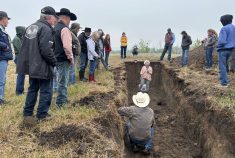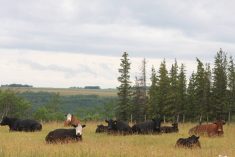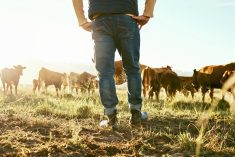It’s not often you hear from a pulse processor when you go to a cattle convention, but Murad Al-Katib isn’t any pulse processor. Starting with one pulse processing facility in Saskatchewan he has built AGT Foods today into an operation with plants in Canada, the U.S., Turkey, Australia, China and South Africa and more than $2 billion in sales.
Earnst and Young presented him with its Canada Entrepreneur of the Year Award in 2016 and last year the Liberal government asked him the chair the Agri-Food Strategy Roundtable to help set the targets that will push Canada’s Agri-Food exports to $75 billion.
Read Also

What to know before you go to Agribition 2025
If you’re attending Agribition 2025, this is the place to find out about tickets, dates and what’s happening this year.
And it was in this larger role that he brought the message to the Saskatchewan Beef Industry Convention that protein will be what drives global agriculture markets in the decades ahead. The goal, he says, is to make Canada the first stop on the protein highway.
He believes protein demand is what we will talk about for the next 40 years. The trick, of course, for every sector will be to figure out how they can snag onto their share of this new future.
Almost certainly a larger slice of it will have to come from outside our local markets. Projections point persuasively to the Asia Pacific region where middle class spending of $4.9 trillion in 2009 is predicted to reach near $33 trillion by 2030.
By comparison the North American middle class that spent $5.5 trillion in 2009 is projected to spend $5.6 trillion in 2030. Europeans are projected to spend $11.1 trillion in 2030.
These types of numbers only emphasize the reasons why all of agriculture (outside of dairy) are pushing for more secure access to these markets through multilateral or bilateral trade agreements. Perhaps it was numbers like these that convinced the Liberal government to sign the Comprehensive and Progressive Agreement for Trans-Pacific Partnership.
The focus now has to shift to a free trade agreement with China and, in the case of the beef industry, tying down the technical trade issues under our free trade agreement with the European Union.
Keep in mind Al-Katib is talking total protein and there are many sources that consumers can turn to in meeting this growing demand. Pulses are one. Meat consumption is growing by up to three per cent per year in Asia, the Middle East and Africa combined but pork and poultry dominate in these markets. That does not mean there is not room for beef to gain an increasing share as the demand for better food increases with incomes in these markets.
In some cases innovation and new technology will be needed to provide the products that these increasingly fickle consumers demand.
Al-Katib is no doubt right. There is plenty of evidence of a growing hunger for protein in a world that is growing richer and increasingly demanding a better standard of living. How much of it is claimed by the Canadian beef industry is a tale still to be written.
Perhaps the better question is could the Canadian industry even fill these new markets if they became available.
Along that line Dr. Murray Jelinski from the Western College of Veterinary Medicine had a more sombre version of the future when he gave the convention a sneak peek at his latest analysis of the industry’s demographics as revealed in the last census.
As we all know the number of beef producers is shrinking. In Western Canada the number dropped from roughly 92,000 in 1996 to 53,000 in 2016 and the age of beef producers continues to climb.
According to Jelinski’s analysis where there were two beef producers over the age of 60 for every one under the age of 30 in 1996, by 2016 there were seven over the age of 60 for every one under 30.
In total more than 25,000 were over 60.
You might expect most of these 60-year-olds to own smaller herds and they did, but they also dominate every herd size that Statistics Canada surveyed, although the 55 to 60 age group were more prominent among the bigger herds.
That might not seem out of place seeing it can take a long time to build a big spread but the population curve on the 2016 census is starting to show an alarmingly disproportionate swing toward this older demographic.
Based on past trends Jelinksi says he would not be surprised to see another 11 per cent drop in the number of beef farms at the next census. So the question becomes how will we maintain, let alone expand the herd as this older generation moves on.
Obviously, the herd size will have to increase if we are to hold our present inventories.
If you look at it the other way round Jelinski says a more optimistic view is the huge opportunity that awaits younger producers who want to get into the beef business today.
Perhaps some of the programming that is going to start coming out of the federal/provincial Canadian Agricultural Partnership should be aimed at encouraging this younger generation.
Al-Katib might say that this is where the future lies for any business.
















